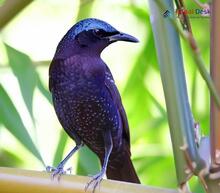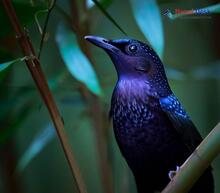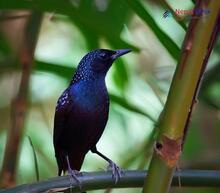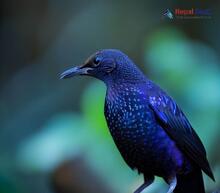Nestled between the towering peaks of the Himalayas and the lush lowlands of the Terai, Nepal is home to an incredible array of bird species. Among these fascinating avian treasures is a lesser-known group called the Myophonus genus. Here, we'll delve into the captivating world of these birds and explore their habitat within the diverse landscapes of Nepal.
Myophonus Genus: An Introduction
Belonging to the Thrush family, Turdidae, the Myophonus genus comprises several species of medium-sized birds known for their striking colors and melodious songs. These elusive creatures often inhabit dense forests and undergrowth, making them somewhat challenging for birdwatchers to spot. However, those lucky enough to catch a glimpse are rewarded with a visual and auditory experience unlike any other.
The Myophonus Genus in Nepal
Nepal boasts several species within the Myophonus genus. Here are three notable examples that reside in various regions throughout the country:
White-tailed Blue Robin (Myophonus eugenei)
Found in broad-leaved forests at high altitudes, this rare and beautiful bird boasts an iridescent blue plumage with a striking white tail patch. Preferring subtropical and tropical moist montane environments, these birds can be spotted during treks through mid- and high-elevation forests.
Blue Whistling Thrush (Myophonus caeruleus)
This versatile thrush can be seen across a wide range of elevations throughout Nepal – from steep mountain valleys to subtropical forests near urban settings. Its glossy blue-black plumage and distinct melodious whistle make it one of the most recognizable species within this genus.
Lesser Blue Whistling Thrush (Myophonus myadestinus)
This small-scale version of the Blue Whistling Thrush is found in forested regions across central and eastern Nepal. With its subtle yet striking coloration, encountering the Lesser Blue Whistling Thrush is a real treat for avid birdwatchers.
Conservation Efforts and Ecotourism
Ongoing habitat loss poses a significant threat to these magnificent birds, underscoring the importance of conservation efforts to preserve both the species and their environments. By engaging in responsible ecotourism practices, visitors to Nepal can contribute to these conservation efforts while immersing themselves in the country's incredible biodiversity.
Birdwatching Tours
Many tour operators offer guided birdwatching trips tailored to suit enthusiasts of varying skill levels. These tours provide an opportunity to explore Nepal's stunning landscapes while learning about the native birdlife, including the elusive Myophonus genus species.
National Parks and Conservation Areas
By visiting national parks and conservation areas throughout Nepal, you directly support conservation projects aimed at preserving wildlife and their habitats. Be sure to follow park guidelines and minimize your environmental impact to help protect these precious ecosystems.
In conclusion, Nepal's unique avian profile provides a fascinating insight into the wonderful world of birds. The Myophonus genus is just one enchanting aspect of this diverse landscape that never ceases to captivate any bird enthusiast. By supporting local conservation efforts through ecotourism, you can play an invaluable role in preserving these remarkable species for future generations to enjoy.




